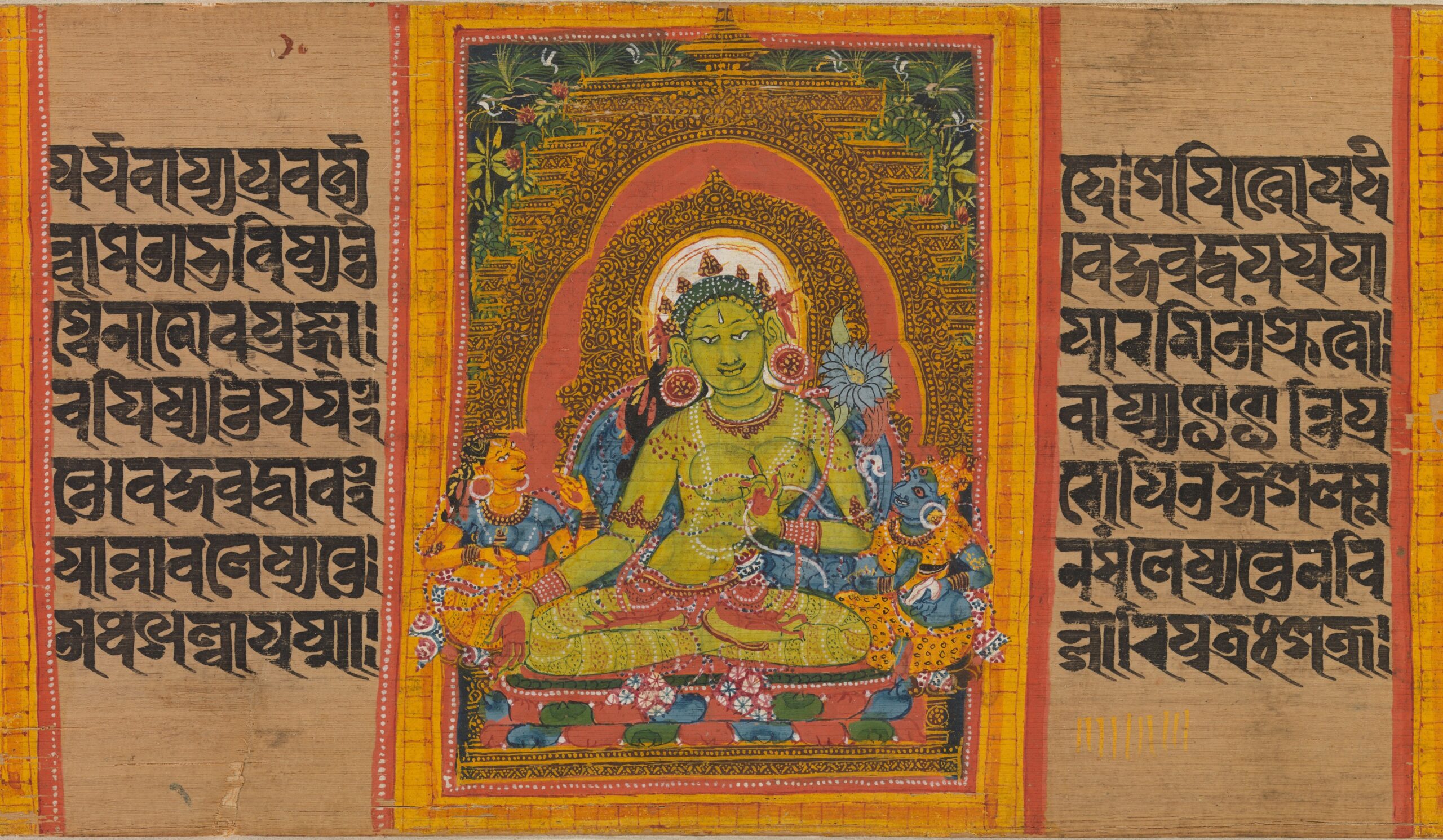Green Tara, a prominent figure in Buddhist tradition, is a revered bodhisattva embodying compassion, protection, and swift action. She is an essential figure in both Tibetan Buddhism and other Vajrayana Buddhist traditions.
Green Tara, also known as “Syamatara” in Sanskrit, is believed to have emerged from a tear shed by the compassionate Avalokiteshvara (Chenrezig), the embodiment of compassion in response to the suffering of all sentient beings. She is often depicted in a youthful and radiant form, adorned with jewels and seated in a posture of ease and grace.
She is easily identifiable by her emerald-green complexion, which symbolizes her association with nature and the element of air. She is typically shown with one leg folded and the other extended, signifying her readiness to spring into action to assist those in need.
Her two primary hands display the gestures of granting wishes and protection. In some depictions, she has additional arms, each holding various symbolic objects, representing her ability to swiftly respond to the diverse challenges faced by beings. Common objects include a lotus flower, a sacred wheel, and a vajra, symbolizing purity, spiritual transformation, and indestructibility, respectively.
As a bodhisattva, Green Tara is deeply committed to the welfare of all beings and is considered particularly responsive to their suffering and fears. Her compassionate nature extends to providing protection from physical and spiritual dangers, as well as offering guidance on the path to liberation and enlightenment.
Devotees believe that reciting prayers or mantras dedicated to Green Tara can bring quick relief from various obstacles and grant spiritual progress. She is often regarded as a swift and powerful ally in times of distress, fear, or uncertainty.
Green Tara is revered through various praises and mantras. The most famous mantra associated with her is the “Om Tare Tuttare Ture Soha.” The repetition of this mantra is believed to invoke her blessings and help overcome obstacles on the path to enlightenment.
Green Tara’s popularity stems from her accessible and compassionate nature. Her swift assistance and protective qualities resonate deeply with practitioners seeking guidance and support on their spiritual journey. She is often seen as a motherly figure, offering unconditional love and care to all beings.
Green Tara, the compassionate and swift goddess of Buddhism, holds a cherished place in the hearts of countless devotees. Her green radiance symbolises hope, growth, and renewal, while her compassionate nature embodies the very essence of the bodhisattva ideal. Through the recitation of mantras and prayers, followers seek her protection, blessings, and guidance on their path to awakening and liberation. As a source of solace and empowerment, Green Tara continues to inspire and uplift the hearts of Buddhists worldwide, fostering a deeper connection with the essence of compassion and wisdom in their lives.
Stay curious.
For further reading, Tara: The Liberating Power of the Female Buddha by Rachael Wooten, PhD is an excellent book.


